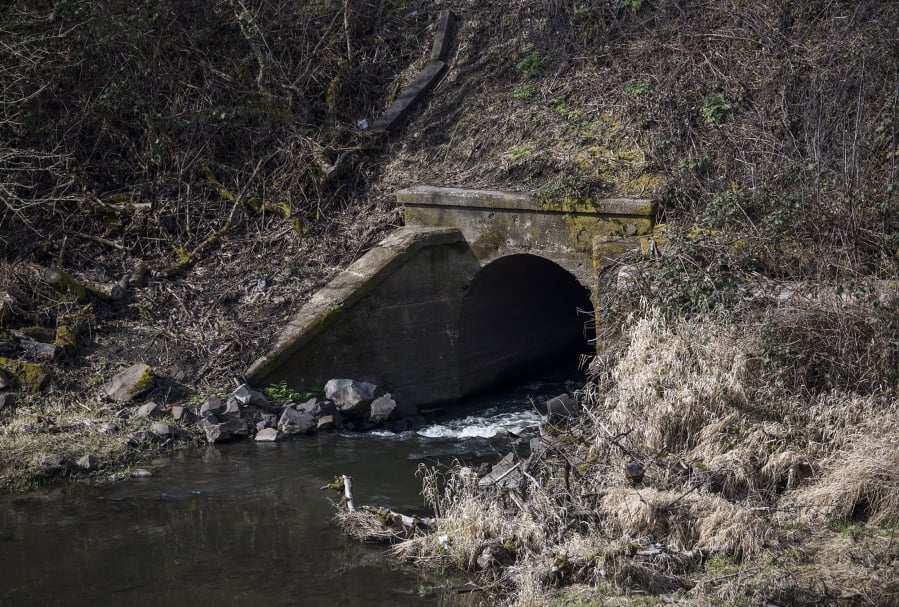He submitted his question to The Columbian’s Clark Asks site, where readers ask questions and vote on which should get further coverage.
This answer was straightforward. Yes, Burnt Bridge Creek and Vancouver Lake connect.
At its terminus, Burnt Bridge Creek spreads into a natural wetland area before it discharges into Vancouver Lake through two successive culverts, said Vancouver Public Works spokeswoman Loretta Callahan.
The first segment is a 6-square-foot wide and 110-foot long concrete culvert that lies beneath Lake Shore Avenue and is maintained by the city, Callahan said. The second — a 7-foot arched and flat-bottomed, 100-foot-long concrete culvert – lies beneath the BNSF Railway line and is under federal ownership, she said.
They’ve been there a long time, though it’s hard to say just how long. Callahan said they were likely built decades ago when the railroad and Fruit Valley Road were constructed so those transportation routes didn’t block the creek’s natural flow into the lake.
Grants and loans to protect Burnt Bridge Creek and other area streams have consistently trickled into local organizations and programs. Vancouver will receive more than $7 million in grant money from DOE for stormwater projects slated for 2020 through 2022, at least three are tied to Burnt Bridge Creek.
Vancouver Lake, which also has pollution, receives about 2 percent of its annual water flow from Burnt Bridge Creek, said Callahan. The lake’s largest water source is Lake River.
Atwater said he has general environmental concerns about the stream and lake, but he was more curious about the engineering that allowed them to connect.
“We love the greenways. We haven’t walked along Burnt Bridge Creek but we walk along (Salmon Creek Greenway Trail) on a daily basis. Every time we drive to downtown Vancouver, I look for something that connects to the lake, and my wife has to tell me to keep my eyes on the road.”




